|
Displaying items by tag: paul klee
A museum rarely publicizes its doubts about rights to works in its collection—but that’s what Amsterdam’s Stedelijk Museum is doing in an exhibition that opens Friday.
“The Stedelijk Museum in the Second World War” recounts the daring ways in which the museum’s employees fought Nazi censors after Germany conquered the Netherlands in May 1940. But the show also features 16 works in the permanent collection by artists including Paul Klee, Wassily Kandinsky and Henri Matisse that the museum says it might not rightfully own.
"Degenerate Art" is the term Adolf Hitler and his henchmen used to describe works they simply did not like. The Nazis are long gone. Much of the art they denounced has survived, and is now on view. Here's Erin Moriarty of "48 Hours":
In the cultural capital that was Berlin in the early 1930s, art and politics often clashed, with modern artists like George Grosz leading the charge.
"Grosz was fearless, and whether it was his art or politics, he spoke his mind," said Jonathan Petropoulos, a history professor at Claremont McKenna College in California. "He was probably the most famous Communist artist in Germany at the time, and he used his art as a weapon."
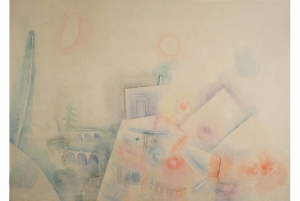
In the midst of its considerable expansion project, the Speed Art Museum in Louisville, Kentucky has been working with conservators to assess the condition of its collection and to oversee any necessary repairs. As part of this effort, the museum sent Paul Klee's "Seven Blossoms," an abstract watercolor and ink drawing on paper, to Nashville-based conservator, Christine Young, in hopes of halting discoloration to the already darkened work. Young was tasked with removing the acidic core of the paperboard that the drawing was mounted on, which was causing the discoloration. After carefully removing "Seven Blossoms" from its mount, Young discovered a previously unknown second drawing by Klee on the reverse.
Kim Spence, Curator of Prints, Drawings, and Photographs at the Speed Art Museum said, "Any discovery of a new work by an artist of Klee’s significance is exciting, but this discovery is particularly significant for the Speed. It expands our representation of the artist and illustrates different facets of his artistic production."
The drawing, which depicts a town or village with geometric buildings set against a faint landscape, will go on view at the museum's satellite space, Local Speed, on February 28, 2014. The work will be displayed in a double-sided frame so that both Klee compositions will be visible.
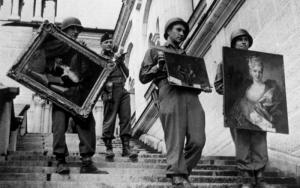
London’s Victoria & Albert Museum holds the only known copy of a complete list of “degenerate art” that was confiscated by Nazis from public institutions in Germany. The Entartete Kunst was compiled by Hitler’s Ministry for Public Enlightenment and Propaganda and includes information on the provenance and fate of each work. The list was donated to the museum by the widow of Heinrich Fischer, an Austrian-born art dealer, in 1996. Since its acquisition, the Entartete Kunst has been used by provenance researchers from around the world.
For the first time ever, the Victoria & Albert Museum will make images of the original pages of the Entartete Kunst available online. The 479-page volume lists institutions alphabetically by location and for each museum, the confiscated works are listed and include information on what happened to each piece. For many works, the name of the buyer and a price are given, while others are marked with an “x,” indicating that they were destroyed.
The Nazis deemed any work that was “un-German” or “Jewish Bolshevist“ in nature degenerate art. While virtually all modern art was deemed degenerate, the Nazis promoted paintings and sculptures that were traditional in nature. The Nazis forced avant-garde German artists into exile and their works were either sold at auction or acquired by museums or collectors. In 1942, a large portion of so-called degenerate works by Pablo Picasso, Salvador Dalí, Paul Klee, Fernand Léger and Joan Miró were destroyed in a bonfire.
A PDF of the Entartete Kunst will be made available on the Victoria & Albert museum’s website starting at the end of January.
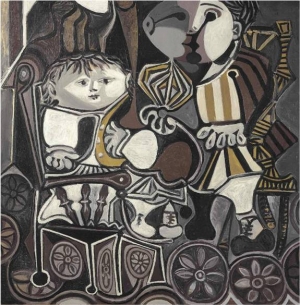
China’s richest man, Wang Jianlin, purchased a painting by Pablo Picasso of his young children, for $28.2 million at Christie’s in New York on November 4, 2013. The work, which was part of the sale of art dealer Jan Krugier’s collection, was expected to sell for $9 million to $12 million. Jianlin acquired Claude et Paloma through Rebecca Wei, managing director of Christie’s Asia. He is the founder of Dalian Wanda Group, a Chinese conglomerate with activities in real estate development, tourism, hotels and more.
Overall, the sale failed to reach its full potential, falling 34% below the low end of its presale estimate of $171.4 million. The two-part auction brought in $92.5 million and out of 155 lots, 29 failed to find buyers including works by Paul Klee, Joan Miro, Pablo Picasso, Wassily Kandinsky, Gerhard Richter and Robert Rauschenberg.
Krugier, who died in 2008, was one of the leading dealers in premier 20th century art for four decades. He operated galleries in Geneva and New York.
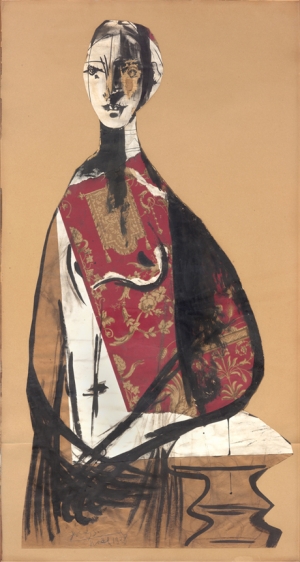
The Louvre’s new outpost in Abu Dhabi, which is slated to open in 2015, has assembled the 130 paintings, miniatures, sculptures, and other artworks that will form its permanent collection. Museum officials allowed reporters a sneak peek of the works including paintings by Pablo Picasso (1881-1973), Rene Magritte (1898-1967), Édouard Manet (1832-1883), and Paul Gauguin (1848-1903). The entire collection will be on view from April 22 to July 20, 2013 as part of the exhibition The Birth of a Museum at a gallery on the island of Saadiyat, close to where construction for the new museum is currently underway.
Louvre Abu Dhabi’s collection is comprised of numerous works from private collections, many of which have never been on public view before. Highlights from the museum’s holdings include Picasso’s gouache, ink, and collage work on paper Portrait of a Lady (1928); Gauguin’s Children Wrestling (1888); and Paul Klee’s (1879-1940) Oriental Bliss (1938).
The Louvre’s new venue, which was designed by the French architect Jean Nouvel, is the museum’s first branch outside of France. The venture is expected to bring the Louvre and its French partner museums approximately $1.31 million over 30 years. The Louvre also has an offshoot location in the northern city of Lens.
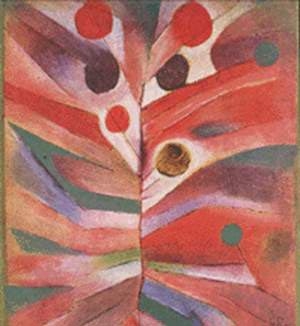
The heirs of Alfred Flechtheim, a prominent Jewish art dealer who fled Nazi Germany during World War II, are urging the German state of North-Rhine Westphalia to return artworks belonging to their relative. The paintings in question, which are by Paul Klee (1879-1940) and Juan Gris (1887-1927), are currently part of the Kunstsammlung Nordhein-Westfalen’s collection in Dusseldorf.
Before the perils of World War II took hold, Flechtheim was an established art dealer in Europe, representing a variety of well-known artists including Klee, Max Beckmann (1884-1950), and a number of French Cubists. Flechtheim ran galleries in Dusseldorf and Berlin, organized many exhibitions, and founded an art magazine. However, Flechtheim’s high standing in the art world made him an easy target for the Nazis. He fled Germany in 1933 shortly after a stream of hateful articles ran in the Nazi press. Flechtheim escaped to Zurich, then Paris before settling in London. After his getaway, Flechtheim’s Dusseldorf gallery was seized and turned over to his former employee Alex Voemel, a Nazi. Flechtheim’s gallery in Berlin was liquidated and his collection, which included works by Pierre-Auguste Renoir (1841-1919), Wassily Kandinsky (1866-1944), Fernand Leger (1881-1955), Georges Braque (1882-1963), and Henri Matisse (1869-1954), was sold.
Mike Hulton, Flechtheim’s great-nephew, claims that Klee’s Feather Plant (1919) and Gris’ Still Life (Violin and Inkwell) (1913) were part of Flechtheim’s private collection and sold under duress for well below their value when he fled Germany. The Kunstsammlung Nordhein-Westfalen does not believe there is enough evidence to support Hulton’s claim. In addition, owners of archives that could help in the case are refusing to let provenance researchers access their information, bringing the dispute to a standstill. Officials from the Kunstsammlung Nordhein-Westfalen assert that if it was proven that Flechtheim was forced to sell the works by Gris and Klee or that he received little to no money for them, that they would part with the paintings, but the current evidence is inconsequential.
Flechtheim’s heirs are currently pursuing restitution for over 100 paintings in museums in the United States, France, Germany, and other European countries.
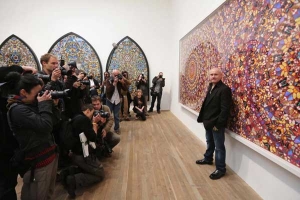
London’s Tate Modern announced that 5.3 million patrons visited the museum in 2012, a record for the institution. In fact, the number of visitors was up a considerable 9.5 percent from the previous year.
An exhibition devoted to the work of contemporary artist Damien Hirst (b. 1965), which ran from April 4 to September 9, 2012, contributed significantly to the Tate’s record attendance. The show, which featured some of the controversial artist’s best-known works, attracted 463,000 visitors making it the most popular solo show ever organized by the museum. The Tate’s recently opened performance space, The Tanks, also contributed to the increase in patrons. The Tanks, which opened in July, is a permanent space for not only performance, but installations and video art as well.
Tate Modern, which opened in 2000, is Britain’s national museum for modern and contemporary art. Located along the Thames River in the former Bankside Power Station, the museum expects another stellar year. Exhibitions planned for 2013 include a major retrospective of the pop artist Roy Lichtenstein (1923-1997) and a show devoted to Swiss-born painter Paul Klee (1879-1940).
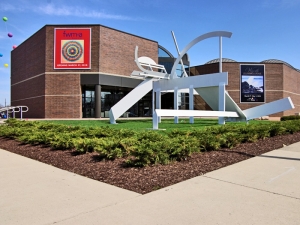
Between 1938 and his death in 1956, G. David Thompson, a steel tycoon and passionate art collector made a number of sizable donations to his alma mater, Peru High School in Indiana. Thompson’s generous gifts were in honor of his art teacher, John Whittenberger, who inspired the former troublemaker to change and his ways and helped set him on the path that led to his eventual success.
Thompson graduated from Peru High School in 1913 and established his own investment banking company in Pittsburgh during the Great Depression. By 1945, he was at the helm of four steel companies in the city. With ample funds, Thompson became a fervent art collector, often buying works by unknown artists who went on to become quite established. His multi-million dollar collection included works by Paul Klee (1879-1940), Georges Braque (1882-1963), Claude Monet (1840-1926), Henri Matisse (1869-1954), Jackson Pollack (1912-1956), Piet Mondrian (1872-1944), Paul Cézanne (1839-1906), Vincent van Gogh (1853-1890), Alberto Giacometti (1901-1966), and Edgar Degas (1834-1917).
While Thompson made a number of donations to major museums, he ultimately gifted 75 paintings and prints, one sculpture, and 54 pieces of oriental pottery to Peru High School. The exhibition Hidden Treasures: The John Whittenberger Collection of G. David Thompson at Peru High School at the Fort Wayne Museum of Art features a portion of the dozens of works Thompson sent to Whittenberger. Works on view include pieces by William Merritt Chase (1849-1916), Salvador Dalí (1904-1989), and Pablo Picasso (1881-1973). Hidden Treasures is on view through February 24, 2013.
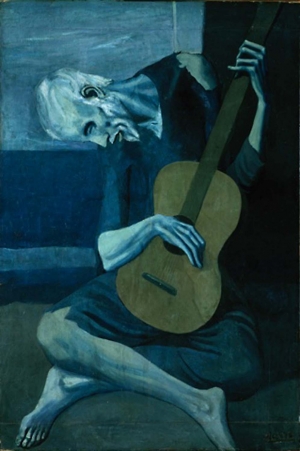
The Art Institute of Chicago is sending almost 100 European modern art masterpieces to the Kimbell Art Museum in For Worth, Texas. Part of a four-month traveling exhibition, the show at the Kimbell is slated to open on October 6, 2013 and run through February 16, 2014.
Renowned for its collection of modern European art, the Art Institute of Chicago will loan its works to the Kimbell while their own galleries undergo renovations. The Kimbell is the only museum to host the Art Institute’s traveling exhibition.
The show will include sculptures and paintings by Juan Gris (1887-1927), Georges Braque (1882-1963), Alberto Giacometti (1901-1966), Salvador Dalí (1904-1989), Paul Klee (1879-1940), Joan Miró (1893-1983), and Marc Chagall (1887-1985). Two major highlights of the show are Henri Matisse’s (1869-1954) Bathers by a River (1909-10) and Pablo Picasso’s (1881-1973) Old Guitarist (1903).
The Kimbell hosted an exhibition of Impressionist works from the Art Institute of Chicago back in 2008. The show was one of the best regarded in the Kimbell’s history.
|
|
|
|
|